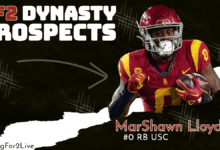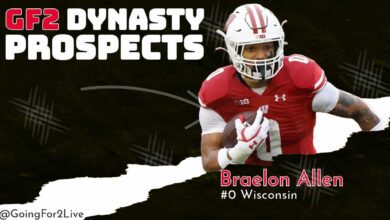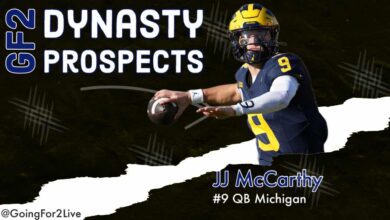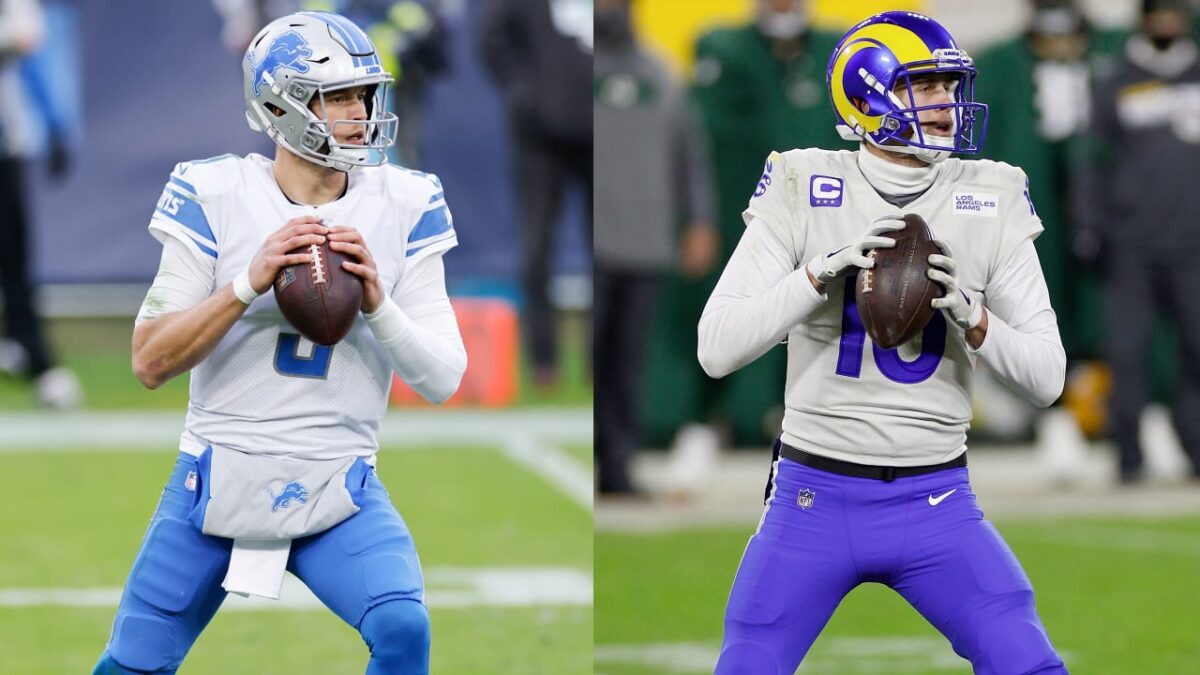
The trade, it’s one of my favorite parts of dynasty fantasy football. In the dynasty game, there are so many scenarios prime for trading. A late-season trade for a star player can be the ticket to a championship. A well-timed “buy-low” trade can net your team a top-tier fantasy producer in future seasons. Trading during startup and rookie drafts allows managers to move up and down the board as desired.
Trading is pure entertainment, but in reality, not all deals end in glory. In fact, trades can yield the highest of highs and the lowest of lows. When a deal works out you’re on top of the world. However, a mistimed trade of a future star can be haunting. Say, parting with Patrick Mahomes during his redshirt rookie season.
Embed from Getty ImagesTo help prepare you for all your future trade negotiations, I present eight groups of tips and tricks for trade strategy and etiquette. Let’s dive into both the dos and the don’ts to help you become a better trader.
1. Recipe for a Good Trade
Do: Have a goal for a trade
When you click that create trade button, what outcome are you looking for? Try to have a goal or purpose behind every potential trade. Ask yourself these types of questions. Why am I making this trade? Does it make my team better now? Will the trade help my team in the future? Will the trade make my team younger? If you don’t know why you’re making a deal then click that reject or cancel button and move on. Identify what players you want to target and how they shape your roster and you will craft better trades.

Don’t: Trade just to trade
We’ve all been there. Other teams are making trades and you just want to be part of the action. I’ve found that firing off-trade offers in haste or flooding the market with numerous offers can end with negative results. Furthermore, it’s unlikely that all of the offers are of equal value or well thought out. You are much more likely to make a mistake in these situations, so avoid them.
In the end, if you love trading just for the thrill of the trade, then by all means have fun and trade away. However, having a goal in mind will yield more satisfying results and better outcomes for your team.
2. The Offer
Do: Lead with a solid offer
I approach trade offers one of two ways. The first method I call the “buy-now” approach. I lead with my best offer per my ranks and values in hopes of getting the deal done quickly. The benefits here are less negotiation and a quick rejection will allow me to move on to other opportunities. My second technique is to lead with a fair offer but one that can be built upon. Here I am ready to negotiate a deal that works for each side. The advantage here is that values on players differ between managers. Thus, there is always the chance that your first offer is accepted and you save on the deal.
Do: Send Logical Trade Offers
Take the time to evaluate other teams and their needs prior to making an offer. Sending an offer of a Tee Higgins and a first-round pick for D’Andre Swift might seem fine on paper. However, it makes far less sense when Swift is that team’s only startable running back. A good trade should benefit both teams involved, so search for logical trades and you should complete more.
Embed from Getty ImagesDon’t: Avoid Making an Offer
Approach trades by actually formulating an offer. In most cases, it’s futile to ask an owner how they value a player or what they would like in return. If you’re inquiring, make the offer. If you’re not ready to make an official offer, then propose the trade over chat and open trade discussions.
Don’t: Send lowball trade offers
I get it, you want to get the best deal possible. You want to be able to tell your friends that you traded Raheem Mostert and a fourth-round pick for Najee Harris. However, before you send that lowball offer I implore you to reconsider. Sending lowball trade offers can hurt your future trade negotiations with other managers. In my experience, the manager sending the wild trade offers and counters gets a bit of a stigma. Other managers may be less likely to work on trades with this type of manager since they know the return offers will be unappealing.
Embed from Getty Images3. The Negotiator
Do: Counter offers
If you are offered a trade don’t feel obligated to accept the offer as is. You can always counter-offer. A good counter offer should keep with the spirit of the original offer with whatever variations you see fit.
Don’t: Over counter
Trades are a negotiation so feel free to go back and forth but beware of going too far. Endless counters could end in no trade at all. Additionally, if the original offer is fair and helps your team, feel free to accept without countering. You never know if that manager is offering a similar deal to other teams.
Love our content? Check out the GoingFor2 Live Podcast Network!
Don’t: Counter with a completely different trade
As I mentioned above, a counteroffer should be fairly similar to the original offer. Trade negotiations are often derailed when a counteroffer is wildly different. For example, say I offer a team Aaron Jones for Trey Lance and they counter with Melvin Gordon, Julio Jones, and a third-round rookie pick for Alvin Kamara. I’m looking to trade Aaron Jones and they are asking for Kamara. At that point, I know we are not on the same page and I’m moving on.
Embed from Getty ImagesDo: Simplify the Deal
Chances are you have received a trade offer that requires you to scroll down in order to read the entire proposal. Trade packages that involve several pieces on each side can be overwhelming to evaluate. It is important to keep in mind that you can always simplify the deal. Your counteroffer doesn’t have to mirror the original exactly. Parse out the key elements of the trade and build a counter around those players.
4. In Search of Rookie Picks
Do: Target draft picks as a rebuild team
Trading for draft picks is a great way to rebuild your team in dynasty. An out of contention team building for the future can trade veteran players for draft picks or young players. A team with multiple first-round picks in 2020 could have ended up with Jonathan Taylor and Justin Jefferson. That is a solid core to build around going forward.
Embed from Getty ImagesDon’t: Overvalue or undervalue rookie picks
It may sound boring but have a balanced approach to trades involving draft picks. Avoid trading young players, that could be core pieces of your team going forward, just to add to your stash of draft capital. Furthermore, if contending, don’t cling to draft picks in lieu of making a key trade. Conversely, don’t ignore draft picks completely. As mentioned they can yield cornerstone fantasy players for your team. Don’t miss out on Justin Jefferson at his lowest price.
Do: Use Draft Picks to Even Out Deals
One strategy I employ at times is to request a second or third-round rookie pick as a “throw-in” to a deal. Particularly in situations when I’m giving up the best player in a trade. Asking for a non-first-round draft pick is unlikely to sink a potential deal. These throw-in pieces could reap large rewards later if you hit on the acquired draft pick. Worse case they are useful to work into other trade opportunities.
Another option besides asking for a second or third-round pick straight up is to propose a draft pick swap. For example, you give your third-round pick and receive the other team’s second-round pick. It sounds small but these small advances in a rookie draft can very beneficial depending on the draft. In 2021, going from the beginning of the third round to the beginning to the second round is a huge leap in value.
5. A Lack of Depth
Do: Explore Trades to Address Depth at Positions
A common reason to make a trade is to address need or depth at a position. If your team currently has two options at running back, then it’s logical to trade for an additional one. If your team is in trouble during bye weeks exploring options to add depth is a reasonable idea. Your goal should be to start the best lineup possible week in and week out, and trading should help you with this goal.
Don’t: Trade for Quantity over Quality
Be careful not to hurt your starting rosters’ overall potential when trading for depth. You don’t want to trade simply for quantity. Use some simple math using average fantasy points to help. Say you are debating trading one of your better players for three players to help with depth. In evaluating the deal, add up the average fantasy points of your player plus the replacement level players that are currently starting in your lineup. Next, add up the average points of the three players in the trade package to compare.
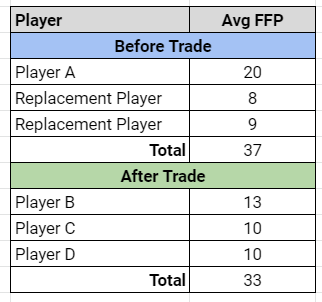
In the illustrated scenario, your team’s actually losing some potential by trading away the best player in the deal. The three pieces are not significantly better than the replacement level, thus your adding quantity, not quality. Make sure the trade package in return truly helps your starting lineup or has other incentives such as draft picks or youth.
6. Open Communication
Do: Use Tools to Communicate with your League
Use any and all communication tools to help with trading. If your fantasy football application has an option for trade bait then you should use it. Utilize your league’s chat platform to discuss trade opportunities with other managers. Communicating to your league the players that are available for trade is vital, especially for the rebuild team.
Don’t: Trade Stars without asking around
If you are planning to trade a star player, such as Derrick Henry, communicate this to the league. Don’t orchestrate a Henry trade in secret. Add Henry to your trade bait and explore multiple trade opportunities. Engaging multiple league managers should allow you to choose from competing offers. This will allow you to get the best return possible for Henry.
Embed from Getty ImagesDo: Respond to Trades
Make every effort to respond to all trade offers. Obviously, life happens and there will be offers we forget about, but try your best. Unless it’s a lowball offer, in that case, feel free to ignore it (just kidding…sort of).
7. The Trade Calculator Debate
Do: Consult Trade Calculators as Needed
Trade calculators can be a good resource for managers looking for the relative value of players. They can help a manager construct a reasonable initial trade offer, or gauge the potential return for a player on the trade block. I would recommend them as a tool, especially for newcomers to fantasy football.
Don’t: Swear by the Calculator
That said, a trade calculator is not absolute. First, there are multiple trade calculators. Second, a calculator is essentially another opinion. As noted, player values can differ wildly between managers. Furthermore, values can change quickly. If you use a calculator, use it as a guide, but think for yourself. Additionally, do not get frustrated by owners who don’t abide by your calculator. Please don’t send another manager the screenshot of your trade calculator to try and convince them to take your offer.
8. Be Cool
Do: Consider Situations where Trade Values are Higher
Don’t be caught off guard when values change for reasons outside of player performance. The value of players and draft picks can fluctuate for a variety of reasons. In-season studs are going to cost a contender more during the later stages of the season. The price of a rookie draft pick gets higher and higher as the draft approaches each year. Even acquiring someone’s favorite player is going to cost you more.
Don’t: Expect Others to Value Players the Same as You
Yes, it’s Julio Jones, but he’s 32 and potentially changing teams (as of writing). There is a good chance other owners in your league are going to have a low value on Jones. In these types of scenarios, the best option is usually to hold. Your value on Jones is not going to align with other teams, and you will have to be willing to take less in a trade to move him.
Don’t: Be Disrespectful
This really should go without saying, but be respectful when dealing with other managers in your league. Keep the trade discussions friendly. It’s fantasy football have fun and keep it cool.
Do: Shake Off those Bad Trades
It’s going to happen. You are going to make a bad trade. When this happens, listen to the great Ted Lasso. “You know what the happiest animal in the world is? It’s a goldfish. It’s got a 10-second memory. Be a goldfish.” Just because one trade doesn’t work out doesn’t mean that every trade is doomed to fail. If a specific league-mate got the best side of a deal with you, that doesn’t mean that manager has your number. If you approach your next trade with a goal in mind and follow some of the trade strategies above, good trades will follow. Forget that last bad trade, be a goldfish.
Embed from Getty ImagesHope you enjoyed this look into trade strategy. Now that you are ready to make better trades, head on over to your league homepage and start looking for trade opportunities.

ATTN Dynasty Commissioners: Do you want to do something cool for your league? How about a 1-hour live show dedicated to YOUR league? Team-by-team breakdowns, rankings, and more. For details and to book a show, visit: GoingFor2.com/plp.

